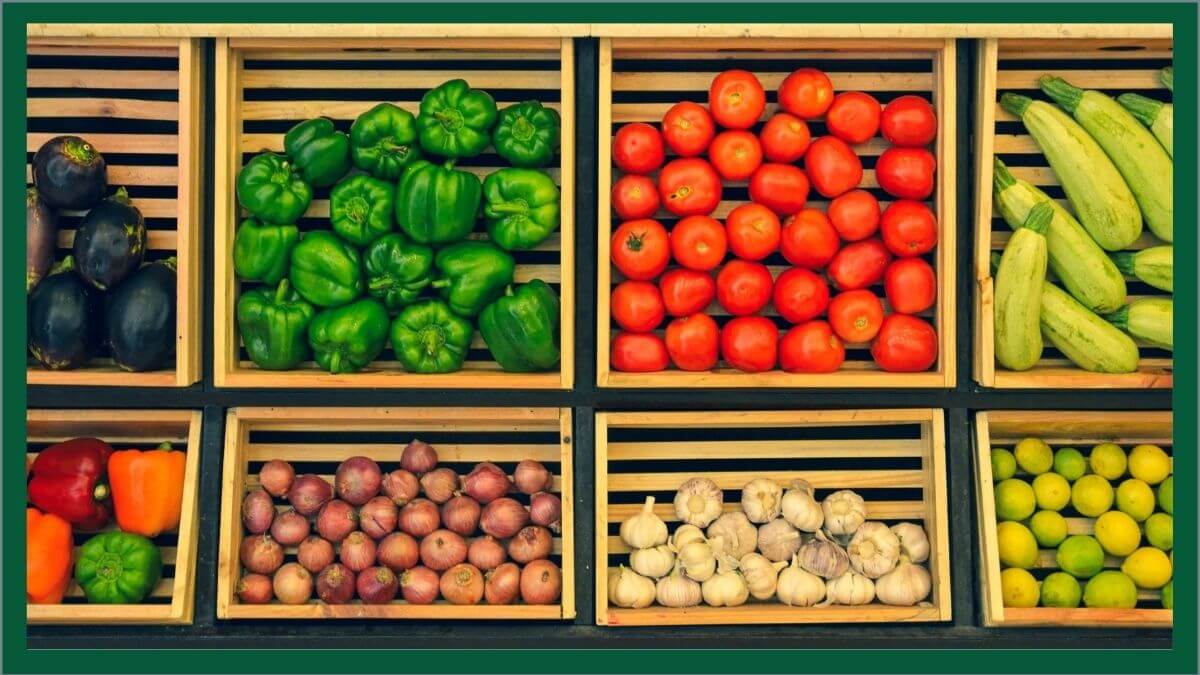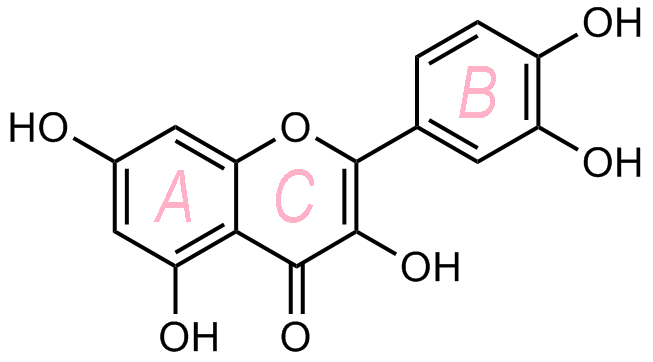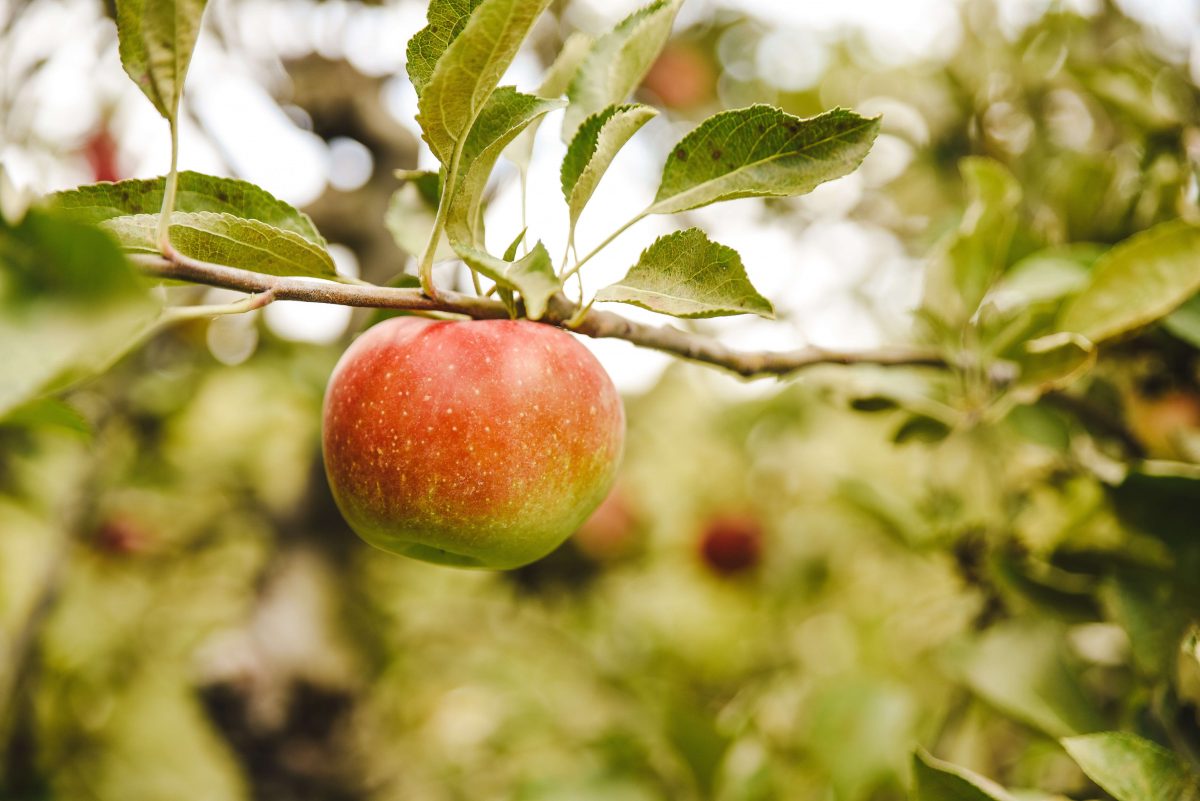
Share this post!
Allergic conditions have been on the rise in the past century. Asthma, autoimmunity, dermatitis, hay fever, and more are plaguing humans more often than ever, including the very young. The exact cause of this increase is difficult to pinpoint. Could it be the hygiene hypothesis, which blames decreased exposure to microbial entities for allergic tendencies? Perhaps environmental factors such as increased pollen or air pollution is responsible. Maybe it is the effect of stress, changing dietary patterns, hormonal imbalances, or altered gut bacteria that elevate the propensity for allergic reaction. No matter the cause, evidence shows that the balance of the immune system is skewed toward a pro-allergic response for many people.
Food is information for the body. In this article, we will explore the bioflavonoid quercetin, and how it communicates with the immune system in order to balance and optimize immune function during an allergic reaction.
What is Quercetin?

Quercetin is a flavonol, a type of flavonoid. Flavonoids, formerly known as vitamin P, are responsible for the variety of colors and flavors in plants. There are over 5,000 flavonoids currently identified that fit into six classes of compounds: flavones, flavonols, flavonones, catechins, anthocyanadins, and isoflavones. Their basic chemical structure includes two phenyl rings (A and B in the following diagram) and a heterocyclic ring (C). Substitutions of hydroxyl (-OH) groups at various positions on the rings, the presence or absence of the ketone on the C ring, and different spatial arrangements of the bonds are just some of the modifications to this structure that account for the diversity of flavonoids in nature.
Typically, flavonoids occur in nature as glycosides. This means the flavonoid – normally insoluble in water – is bound to a sugar molecule, which increases its solubility and bioavailability. Sugar moieties such as galactose, glucose, rhamnose, or rutinose replace the hydrogen of the hydroxyl group on the “C” ring, yielding varieties of quercetin glycosides such as hyperoside, isoquercetin, quercitrin, and rutin. The image above shows the structure of quercetin in its aglycone form, which is the configuration without the attached sugar.
Which Foods Contain Quercetin?
Quercetin is ubiquitous in plant foods, accumulating in the leaves and skin of plants because it is a hormone that stimulates growth in the presence of light. Plants whose skin-to-flesh ratio is the highest generally contain the highest concentration of quercetin. Over half of dietary flavonoids contain the aglycone structure of quercetin, making it the most abundant flavonoid in our diets.
Foods rich in quercetin include:
- Capers
- Onions, shallots
- Apples
- Kale
- Berries
- Green tea
- Tomatoes
Recall that quercetin is generally found linked to a sugar molecule in plant foods, which is the best form of quercetin for its bioavailability. Absorption of quercetin is increased when consumed with vitamin C, folate, dietary fat, fiber, and other bioflavonoids. However, quercetin absorption into circulation still remains fairly low.
RECIPE >> Warm Spiced Butternut Squash Salad with Apples and Raw Pumpkin Seeds
Quercetin Metabolism
Bioflavonoids are foreign substances to the human body, also known as xenobiotics. Xenobiotics are metabolized by the liver or microbial cells, which transform these compounds into more easily eliminated forms (i.e. water soluble) before damaging cells and tissues. Though quercetin may not remain in its original form for very long, the benefits of bioflavonoids occur during their transit through the gut because of favorable interactions with the microbiome and the effects of their derivatives on host cells.
In the small intestine, some quercetin glycosides begin to be metabolized by beta-glucosidases, which are enzymes produced by humans and gut bacteria that break the bond between quercetin and its attached sugar. A small amount of quercetin absorbs through the cells of the small intestine and enters circulation, stopping first at the liver where it is transformed into metabolic byproducts.
The majority of dietary quercetin continues along the GI tract to the colon, where microbiota transform quercetin in various ways, resulting a variety of phenolic or aromatic compounds that affect the ecosystem of the colon and human health.
The low bioavailability of quercetin means that this nutrient spends more time interacting with the microbiota on the surface of human cells, which is, coincidentally, the same location as the majority of the immune system.
But first, let’s take a look at how the immune system responds to the presence of allergens.

What Happens In an Allergic Response in the Immune System?
The immune system contains two basic divisions: the innate and the adaptive. When a foreign substance, known as an antigen, enters the body, whether inhaled through the air or ingested with food, the innate immune system interacts first. An innate immune cell binds to the antigen and exposes a fragment of it for further review by the immune system. If the antigen fragment is deemed foreign and potentially harmful, plasma cells form IgE antibodies to initiate an immune response. The IgE antibody attaches to other immune cells, triggering the release of chemicals that initiate an allergic response. This process generates a “memory” for a particular antigen by the adaptive immune system, so that when the antigen comes around again, the immune response occurs faster and with more vigor.
Immune cells that release chemicals that drive an allergic response are called granulocytes, which include mast cells, basophils, neutrophils, and eosinophils. Granulocytes are immune cells that contain substances such as histamine, heparin, cytokines, chemokines, and proteases that are packaged into small compartments called granules. When antigens and IgE antibodies bind to receptors on granulocytes, they release their contents into circulation in a process called degranulation. Granule contents call additional immune cells to the area, breakdown protein fragments, and increase blood flow to intensify the immune response (i.e., cause inflammation).
Allergies, Asthma, and Food Allergies
These effects are an absolutely necessary component for human survival. However, problems arise when the immune system is hypersensitive to environmental stimuli. Indeed, according to a review article published in Frontiers in Immunology, “persistent mast cell degranulation resulting from recurrent responses to innocuous substances leads to allergies, asthma, and food allergies.”
The overproduction of pro-inflammatory cytokines can explain why the immune system may overreact to a relatively innocuous substance. A cytokine is a chemical communication molecule that dictates the response of the immune cells. To keep the immune system in balance, there are two general forms of immune cytokine characterization: Th1 and Th2. Th1 immunity is the cell-mediated response and Th2 is the systemic response. Allergies are generally thought to be a result of an imbalance favoring excess production of Th2 cytokines that results in a systemic inflammatory response.
How Quercetin Modulates the Immune Response
This 2016 review highlights some of the benefits of quercetin for allergic conditions.
- Quercetin is an effective antioxidant that is able to donate electrons to stabilize free radicals generated from the fallout of the immune response. The multiple aromatic rings of quercetin give it resonance, which allows electrons to be shared among the molecule, so quercetin can afford to lose an electron without becoming destabilized. Therefore, quercetin mitigates cellular damage caused by oxidative stress.
- Quercetin inhibits degranulation of mast cells and basophils, thereby preventing the release of histamine and inflammatory cytokines, whose effects characterize the symptoms of an allergic response. Suggested mechanisms of this result are stabilization of the cell membrane and inhibition of calcium influx to the cell, which is required for the release of the granules.
- Quercetin improves an imbalance of Th1/Th2 type cytokine production by suppressing the formation of IgE antibodies and pro-inflammatory cytokines such as IL-4 and IL-13, which are associated with the Th2 response.
- A study on rats shows improved immune response on the mucosal layer of the GI tract due to decreased IgE and histamine production when exposed to peanut proteins, suggesting quercetin could be implemented therapeutically for food allergies.
- This epidemiological study shows evidence, though limited, that higher apple intake was inversely correlated with asthma, potentially due to the antioxidant, anti-allergic, and anti-inflammatory properties of flavonols, such as quercetin.
These conclusions are derived mostly from in vitro (cells in a petri dish) and animal studies, where concentrations of quercetin used are unlikely to be achieved in vivo (living humans) because of the rapid metabolism of flavonoids discussed earlier. Human studies generally do not show a strong correlation between quercetin intake and immune function, though hopefully future research will clarify the effects of flavonoids on humans. Benefits to human health may be better explained by quercetin’s interaction with the microbiome.
How the Microbiome Influences the Immune System
Remember that the structure of quercetin contains several hydroxyl groups – a characteristic that makes quercetin a polyphenol. Polyphenol compounds nourish the microbiome and help to maintain symbiosis by controlling populations of good and bad bacteria and maintaining the integrity of the gut mucosal lining.
A healthy gut lining is essential for digestion and assimilation of nutrients, as well as keeping pathogens and undigested food particles out of circulation, where they stimulate an immune response and cause systemic inflammation. In addition, one of the main functions of gut microbiota is to regulate the innate and adaptive branches of the immune system.

Does an Apple a Day Keeps the Allergies Away?
Chances are you already know that eating plants of all colors of the rainbow is likely to be good for your health, but you may not be aware of the role that bioflavonoids have as responsible stewards of the microbiota, whose importance for immune function cannot be overstated. Consuming a wide variety of plant foods rich in flavonoids, such as quercetin, can improve microbial diversity and nourish populations of good bacteria, which maintain the structural integrity of the single-celled mucosal layer in your gut and respiratory tract that separates you from the outside world. These effects not only help to keep allergens outside of circulation, but may mediate the response of your immune system to prevent a hypersensitive allergic reaction.
Related reading…
3 Steps to Surviving Allergy Season
The 5 Best Herbs for Your Health to Grow Now
A Comprehensive Guide to Vitamin C Supplements
A Holistic Approach to Tattoos
About the author: Karyn Lane is a current student of NTI’s Nutrition Therapist Master Program. She finds her chemistry degree a useful tool in her study of nutrition and loves to treat herself as a laboratory for new recipes and cooking techniques. You can follow her on Instagram @feel.alive.nourishment.
Images: Image by Алексей Шелег is free for use by Wikipedia Commons; Image by Adli Wahid is free for use by Unsplash; Image by Erika Fletcher free for use by Unsplash; Image by Nick Youngson is licensed under CC BY-SA 3.0
Share this post!




















